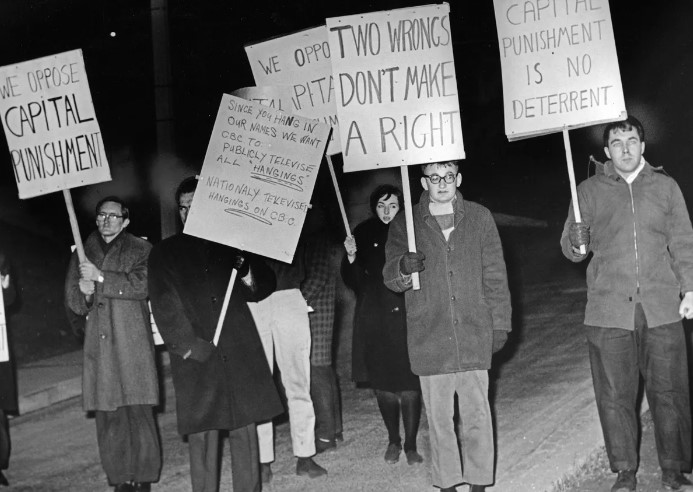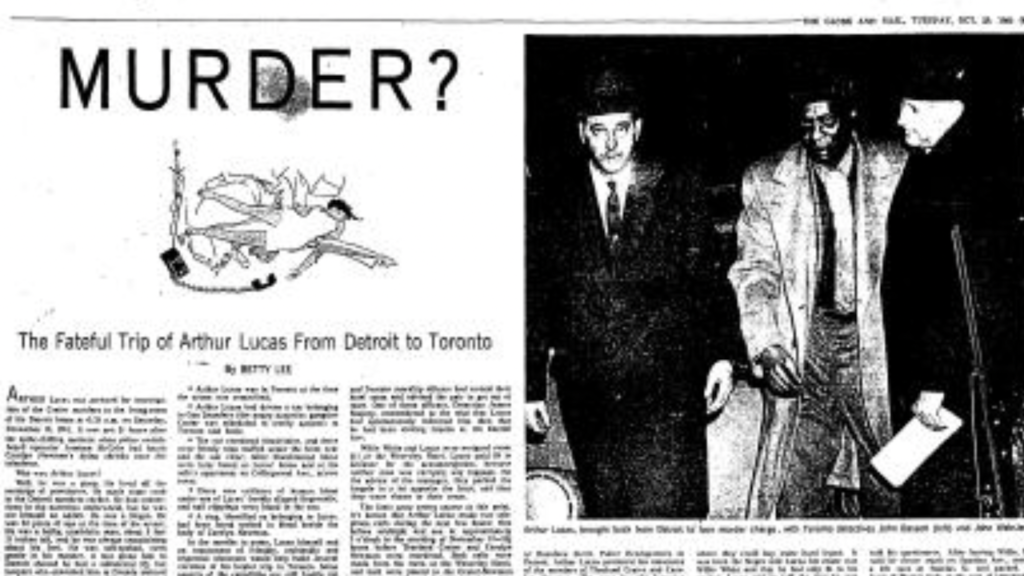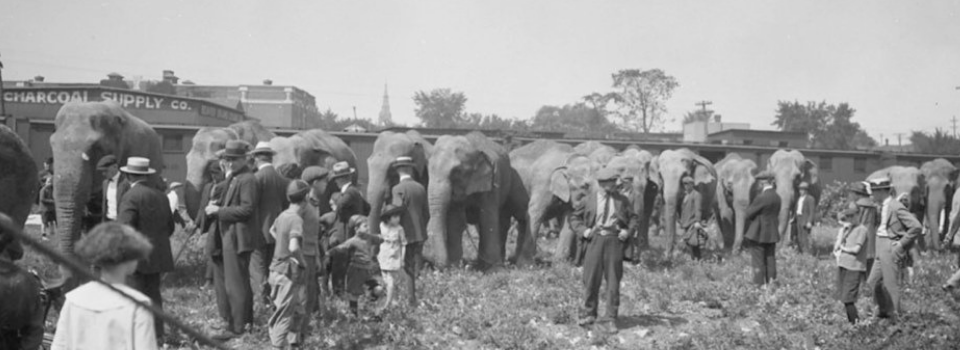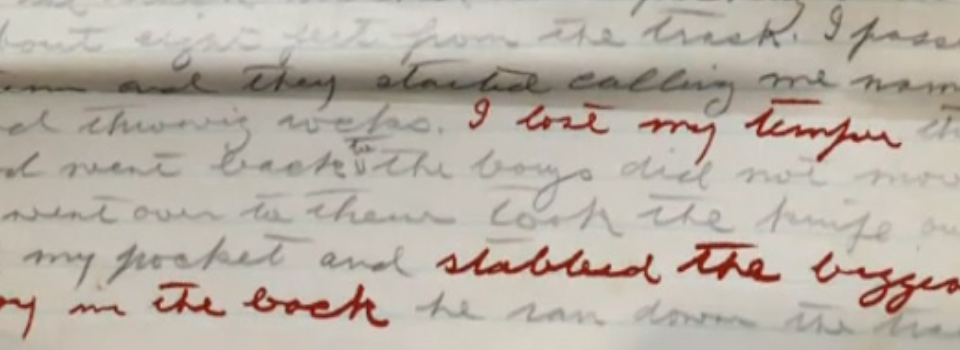“FATHER FINDS SONS DEAD ON RAIL TRACKS.”
This sombre headline in the Halifax Mail on July 20, 1933, signalled the beginning of a case that dragged on for two years in Nova Scotia, with repercussions still being felt today.
On July 19, Bramwell and Edward Heffernan, aged twelve and ten, set out to pick berries along the railway tracks near their home on the outskirts of Halifax.
 When returning home that evening from a similar expedition, their father discovered Bramwell’s bloodied body lying face down on the tracks. His brother Edward lay lifeless a short distance away. What had happened?
When returning home that evening from a similar expedition, their father discovered Bramwell’s bloodied body lying face down on the tracks. His brother Edward lay lifeless a short distance away. What had happened?
Newspapers and the general public weighed in, with opinions seesawing between a tragic accident involving a passing train and the act of a deranged killer. Other than establishing that both boys had suffered deep wounds to the chest, the inquest and postmortem findings were inconclusive; although a couple who had also been berry hunting that day subsequently reported seeing a “coloured” man in the vicinity.
As weeks turned to months, the investigation seemed to have puttered to a standstill. Then came the breakthrough. Almost five months after the incident, police arrested Daniel Perry Sampson, a forty-nine-year-old Black Nova Scotian World War I veteran. He allegedly told officers that he lost his temper and stabbed the boys after they had pelted him with both rocks and racial taunts. He led the officers to a spot where they found a knife he claimed to have hidden after the murders. Then, as he could neither read nor write, he confirmed these statements by marking with an “X” a document handwritten by the police. In April 1934, Sampson was tried for the murder of Bramwell Heffernan.
Two trials, two appeals to the Supreme Court of Nova Scotia, and a final appeal to the Supreme Court of Canada later, Sampson was hanged for Bramwell’s murder at the County Gaol (then situated behind the Old Halifax Court House on Spring Garden Road, Halifax, but since demolished.) The night before he went to the gallows, he made a final statement, admitting his guilt and apologizing to the slain boys’ parents.
With its headline-grabbing details and its rocky passage through the courts, the case garnered huge notoriety. It has now been meticulously analyzed by lawyer and legal historian David Steeves in an essay entitled “Maniacal Murderer or Death Dealing Car: The Case of Daniel Perry Sampson, 1933–1935,” published in The African Canadian Legal Odyssey: Historical Essays.
Although the issue of race had not come up at the first trial, during the jury selection for Sampson’s second trial, his lawyer, Ormond Robert Regan, vigorously challenged potential jurors for preconceived presumptions of guilt and prejudice “in respect of colour.” But Steeves points to other factors that skewed the jury selection system in Nova Scotia, effectively stripping both poor people and Black people of their rights and equality before the law. Jurors were required to be males of between twenty-one and sixty-five years of age who resided in the province. But there were three additional requirements for jury duty at the time. First, the jury pool was limited to those living “in the most affluent and predominantly white areas of the downtown core and residential South End, with no overlap into areas with significant numbers of African Nova Scotian population.” Second, the real or personal property requirements for potential jurors were high, although the exact amounts varied across the province. The third category relaxed the property requirement to include less-affluent men who were partners in a firm with assets that, if divided equally, would be substantial enough to qualify each member of the firm regardless of his individual worth. The down side of this, of course, is that the poorer types might well have been inclined to defer to the opinions of their more-affluent employers or partners. As Steeves pithily puts it: “By effectively excluding all African Nova Scotians and members of the working class from jury service within Halifax County based on discriminatory geographic and economic criteria, legislators ensured that the only time these individuals were seen in court would be as alleged outlaws from inside the prisoner’s box.”
Throughout the long drawn-out process, Sampson’s lawyer, Ormond Regan, maintained that his client was not guilty by reason of insanity. (Sampson was described during the case as being “of low mentality,” although his family roundly denies it today. “He was shell-shocked from the war,” CTV Atlantic quotes his granddaughter as saying.)
During the second trial, Regan complained bitterly that the attorney general had been negligent in not granting “the accused a more thorough mental examination.” Also, in a dissenting opinion at his second appeal, one of the judges suggested that in light of both his mental deficiencies and his race, Sampson “was perhaps peculiarly susceptible … to the insults offered him and perhaps might not unreasonably be presumed to have lost control of himself so as to justify a finding of manslaughter.” Steeves notes, however, that this point of view did not reflect the law as it stood at that time. It would take another fifty years before age, gender and race might factor into considerations of provocation in Canadian courts.
More than eighty years after the fact, this story has taken an unexpected turn. A CTV Atlantic report in November 2017, entitled “Halifax’s final execution: Questions linger about the last man to hang,” again brought the case, and Sampson’s personal life, to the attention of the public. The report caught the interest of retired Rear Admiral Barry Keeler, national president of the Last Post Fund, who undertook to have a gravestone marker installed to honour Sampson as a veteran of World War I. Without wishing to minimize the sadness of the case, Keeler told CTV: “We don’t have any difficulty with that because what happened post his military career really is none of our business.”Beneath a cross, the headstone gives Sampson’s name, regiment, birth and death dates, and ends with the words: “Lest we forget.”
This tragic story continues to haunt us: two dead boys; a flawed jury selection system; a community steeped in racial and socio-economic inequalities; and finally, a mentally damaged war veteran who might have been treated more kindly in a later age by the criminal justice system. Let us hope that it will, indeed, never be forgotten.
More information can be found at: The African Canadian Legal Odyssey: Historical Essays





